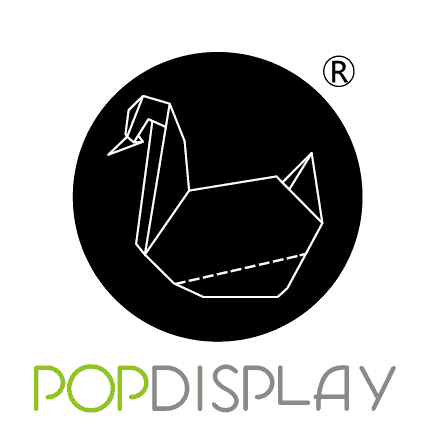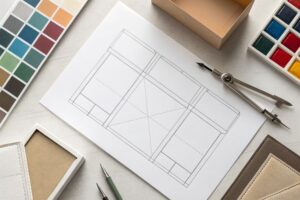Why Choose a Custom Beverage Display?
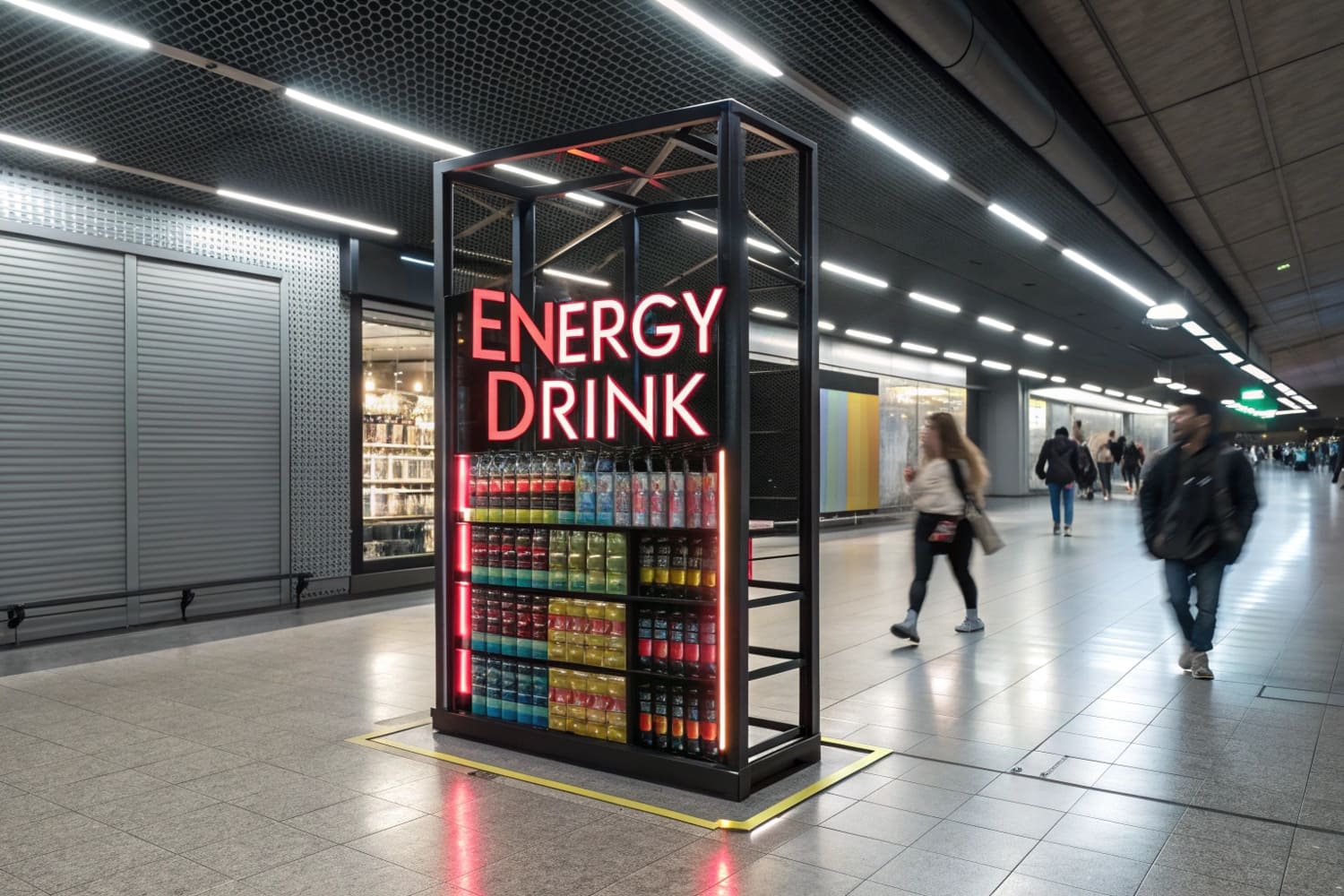
Retail aisles are crowded. Shoppers move fast. Generic shelves hide your drinks. That hurts launches. A custom display stops them, tells a story, and earns trial.
Choose a custom beverage display to win attention, fit your packaging, communicate benefits, speed setup, and boost sell-through, while meeting sustainability goals and retailer rules. It is flexible, cost-effective, fast to prototype, and designed for your launch calendar.
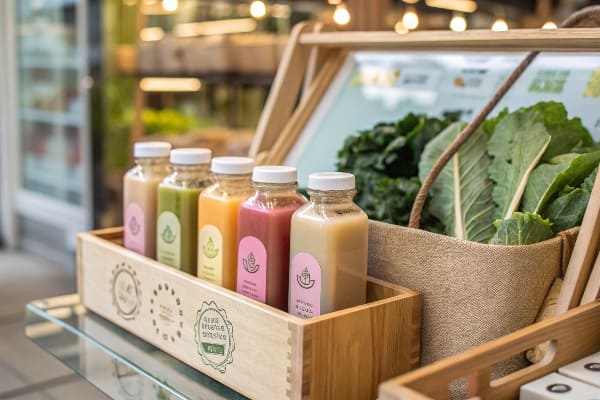
I build cardboard displays every day. I see what converts, and what wastes floor space. I will show you the core ideas, the simple terms, and the steps that work for beverage launches.
Why is product display important?
Crowded shelves push all products to look the same. New flavors drown. Price tags fight for time. Good displays create a pause. That pause starts the sale.
Product display matters because it captures attention, guides choice, and speeds trial at the shelf; it lifts sell-through, reduces returns, and protects marketing spend by turning brief shopper attention into real purchases.
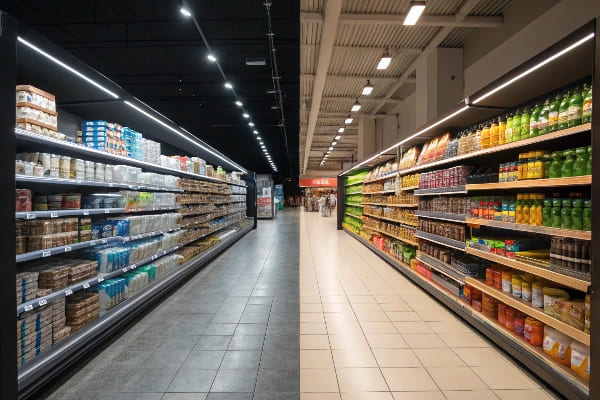
Three forces that drive impact
I keep this simple. First, attention is scarce1. A display must claim it fast. Second, navigation is hard. A display must point the way to flavor, pack size, and price. Third, memory fades2. A display must leave a clear brand cue. When I launched a seasonal iced tea, a small header with “Real Brewed. Less Sugar.” doubled trials in week one. The message was clear. The color matched the can. The pack-out was near eye level. These basics beat fancy ideas. Markets differ too. North America is steady and rule-driven. Europe rewards eco signals. Asia-Pacific grows fast and loves bold shapes with PDQ speed. I design for each case.
Core value at a glance
| Reason | What it means | Proof in practice |
|---|---|---|
| Attention3 | Stop the shopper in 3 seconds | Large header, bold flavor chip, clean price holder |
| Navigation | Reduce effort to choose | Clear flavor blocks, cold vs. ambient icons |
| Conversion | Turn interest into trial | Immediate grab zone, single-serve in front, multipack behind |
| Efficiency | Fit retailer rules | Correct footprint for Costco/Walmart PDQ and fast setup |
| Sustainability4 | Earn trust and approvals | Recyclable board, water-based inks, printed recycling marks |
What does "display custom" mean?
Many people think custom means only a logo swap. That is not enough. True custom starts earlier. It starts with fit, flow, and speed of setup.
Custom means your structure, graphics, materials, and logistics match your product, your retailer, your timeline, and your cost. It is built to your cans or bottles, your message, your route, and your budget.
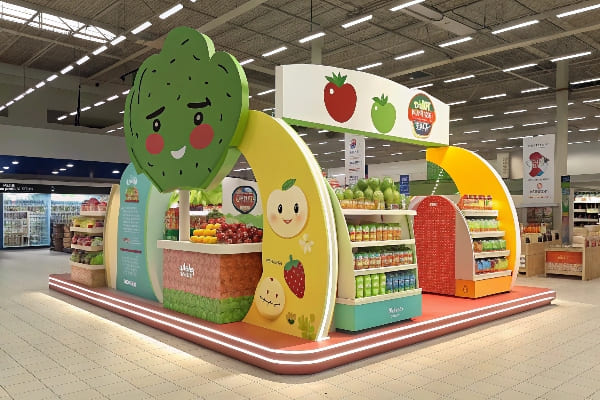
What I customize and why it matters
Custom starts with structure. A 12-pack of canned seltzer needs different shelves than 500 ml bottles. I set shelf pitch5 so packs face forward after grab. I add hidden stops for stability. I design knock-down parts for small cartons. Graphics come next. I map flavor colors to panels that face traffic. I place one claim only in the top third. I avoid clutter. Materials follow. Single-wall board cuts cost for short events. Double-wall top trays add strength for heavy bottles. I pick water-based inks6 for Europe. I add QR codes for Gen Z engagement. Logistics close the loop. I match pallet counts to retailer rules and truck plans. I flat-pack to cut freight. I write a simple assembly guide with five steps and big pictures. This is what custom means to me: fit the job, not the catalog.
Custom elements checklist
| Element | Beverage implication7 | Notes I use |
|---|---|---|
| Structure | Shelves vs. stackers vs. dump bins | Cans stack; bottles need rails and stops |
| Footprint | Club vs. grocery vs. c-store | Respect pallet footprints and aisle widths |
| Graphics | Flavor, benefit, brand cue | One headline, one proof, one CTA |
| Materials | Single-wall vs. double-wall | Heavier SKUs need reinforced trays |
| Finish | Coating, nano-top, anti-scuff | For chillers or humid zones |
| Digital vs. offset | Digital for short runs and fast edits | |
| Pack-out | Flat-pack vs. pre-filled | Pre-filled for speed, flat-pack for cost |
| Compliance | Recycling marks, certifications8 | FSC, water-based ink, retailer docs |
What is the purpose of a display?
A display does more than look nice. It must sell and tell. It must also protect the plan and the budget.
The purpose of a display is to drive awareness, guide selection, trigger trial, and grow basket size while meeting retailer rules, brand goals, and sustainability targets—all within cost and timeline.
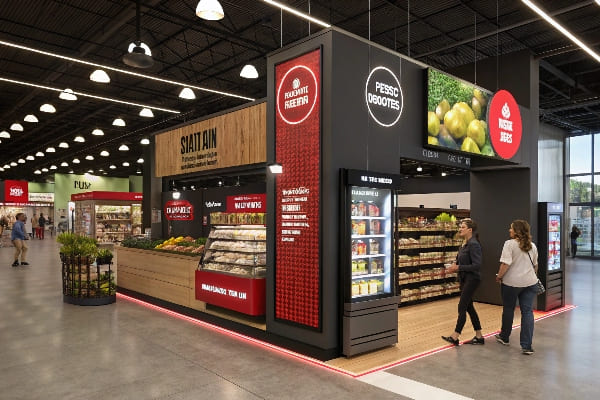
Jobs a beverage display must do
I write the jobs before I draw lines. First job is awareness. The header must announce flavor or function fast. Second job is education. The copy must explain one benefit, like “Zero Sugar9” or “Electrolytes.” Third job is trial. The product must be easy to grab with a clean front edge. Fourth job is basket. I place trial SKUs in front and multipacks behind to lift units. Fifth job is trust. I add recycling marks10 and honest claims. Sixth job is speed. The kit must set up in minutes. When I skip any job, I pay for it later in returns, broken shelves, or missed weeks.
Purpose-to-metric map
| Purpose | Metric | Simple tactic |
|---|---|---|
| Awareness | Stop rate, dwell time | 6–8 inch header, bold color block |
| Education | Claim recall11 | One claim, large font, high contrast |
| Trial | Unit sales, attach rate | Front “grab zone”, clean facing |
| Basket | Units per basket | Single-serve + multipack layout |
| Trust | Approval rate12, shopper feedback | Recyclable board, clear marks |
| Speed | Setup time | 5-step guide, numbered parts |
How to create a good display?
I follow a clear path. I keep steps short. I cut risk early. I test strength. I promise dates and hit them.
Build a good display with a tight brief, fast CAD, real samples, strength tests, color control, simple assembly, and clear logistics; keep the message simple and design for the specific retailer and launch date.
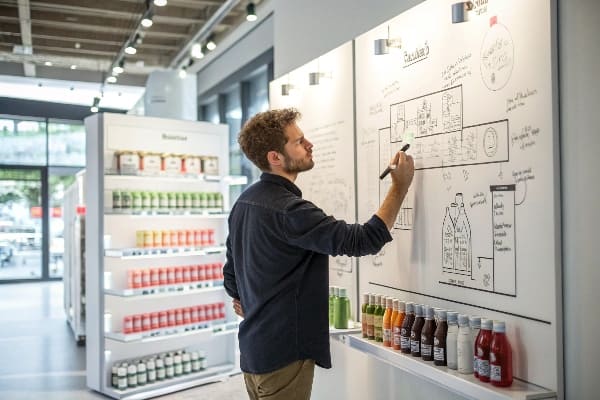
My 8-step build plan
I run PopDisplay in China. I operate three production lines for corrugated displays13. My process is simple and proven. Step one is the brief. I collect SKU sizes, weights, target stores, and dates. Step two is CAD. I make structure in hours, not days. Step three is 3D renders. I share fast options and edit for free until you like it. Step four is a white sample. We test fit with real cans and bottles. Step five is color. I run color swatches and approve against your master files, so we avoid shade drift. Step six is strength. I load shelves, test drops, and test transport. Step seven is pilot. I build a short run and time the setup. Step eight is mass production14 and pack-out. I lock quality with checklists and photos. I ship flat-pack or pre-filled per plan. This flow cuts delay, protects color, and keeps displays alive through the whole promo.
Steps, actions, and risks avoided
| Stage | What I do | Risk avoided |
|---|---|---|
| Brief | Define goals, SKUs, dates | Scope creep, missed windows15 |
| CAD | Engineer to weight and fit | Lean shelves, product falls |
| Render | Approve look in 3D | Misread design, late edits |
| White sample | Fit test with real packs | Wrong pitch, wobble |
| Color | Hard proofs, targets | Color shift, angry buyers |
| Strength | Load and drop tests16 | Collapse, returns |
| Pilot | Time setup, fix steps | Slow installs, overtime |
| Production | QC by checklist | Mixed materials, defects |
| Logistics | Choose flat-pack or pre-fill | Freight waste, damage |
Extra tips from field work
I ship to the United States, Canada, the I ship to the United States, Canada, the United Kingdom, and Australia. Rules vary. Club stores want PDQ speed17 and strong corners. Grocery wants small footprints and clean price holders. Europe asks for eco marks and water-based inks. Asia-Pacific grows fast and likes bold shapes. Digital print helps when you need regional art. If your timeline is tight, pre-filled kits save days. If your budget is tight, flat-pack saves freight. If weight is high, use double-wall trays only where needed. Keep the headline short. Keep the claim honest. Keep the setup under five minutes. This is how good displays get done.
Conclusion
Custom beverage displays win seconds, clear choices, and faster sell-through. Keep the message simple, the structure strong, and the setup fast. Build for the store, the date, and the shopper.
Understanding the scarcity of attention can help you create more effective marketing strategies that capture consumer interest. ↩
Exploring the impact of memory on consumer behavior can enhance your marketing tactics and brand recall strategies. ↩
Discover proven techniques to capture shopper attention quickly, enhancing your retail strategy. ↩
Explore how sustainable practices can boost consumer trust and enhance brand reputation in retail. ↩
Understanding shelf pitch is crucial for optimizing product visibility and accessibility, enhancing customer experience. ↩
Exploring water-based inks can reveal eco-friendly options that improve sustainability in packaging design. ↩
Understanding beverage implications can enhance your packaging strategy and improve product appeal. ↩
Exploring this topic can help ensure your packaging meets environmental standards and attracts eco-conscious consumers. ↩
Explore this link to understand how Zero Sugar can enhance your beverage choices and promote healthier living. ↩
Learn about the significance of recycling marks and how they contribute to sustainability and consumer trust. ↩
Understanding claim recall can enhance your marketing strategies and improve customer retention. ↩
Exploring ways to improve approval rates can lead to better customer satisfaction and increased sales. ↩
Explore this link to understand how corrugated displays can enhance your retail strategy and improve product visibility. ↩
Discover insights on mass production to learn how it can streamline your operations and maintain high-quality standards. ↩
Understanding scope creep can help you manage projects effectively and meet deadlines. ↩
Learn about load and drop tests to ensure product durability and reduce returns. ↩
Understanding PDQ speed can enhance your shipping efficiency and meet club store demands effectively. ↩
